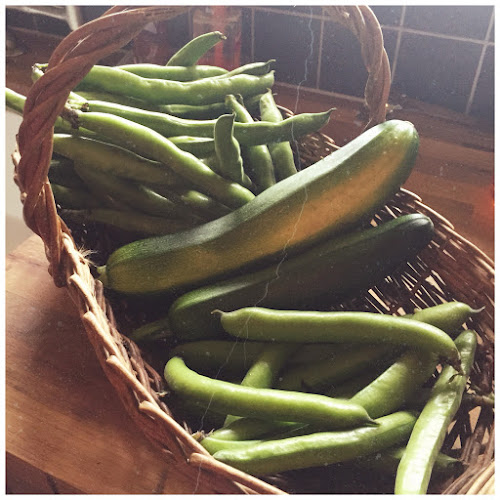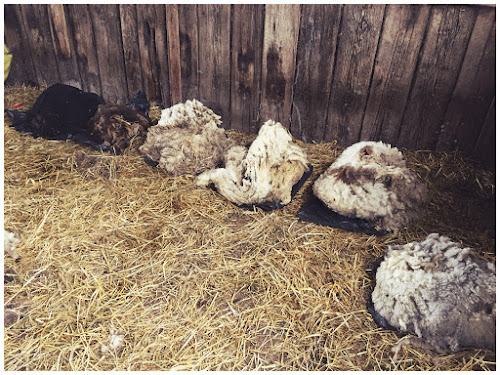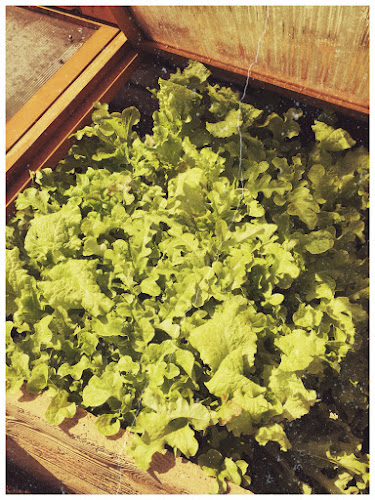Over the Christmas period we lost our older goat, Cindi. This has meant that Mindi was on her own. With the addition of the sheep it was hoped that she would find friends and peace. Initial introduction went relatively well (if you missed that instalment check it out here).
Well, her friendship turned as she became the sheep/goat equivalent of the Don! A criminal mastermind with a following of minions. She leads them on rampages through fences, into neighbours fields and around vegetable patches. All with an innocent look on her face.
The final straw came when, after we prevented her climbing over and flattening all the fences to allow her posse through, she lifted the fence and took them under. She took them to a small paddock by ours that has a horse and donkey in it.
With only a four year old to help I traded her in with our next door neighbour to get a more useful sheep wrangler. We managed to get them out of the field and onto the road to bring them up to our main gate. Something then scared them so they legged it up the road, past our gate and on. They then nipped into a field owned by our dairy farm neighbour, and disappeared into the distance.
Luckily the farmer in question appeared at that moment and got his quad bike and rounded them up, we brought them back up the road and back into the yard. He then went after the goat who'd given him the goaty finger the last time.
So it has been decided that Miss Goat would be given her own private and (hopefully) goat proofed paddock where she can enjoy life and stop leading the sheep astray. It's right next to the sheep so she still has some company.
So, I thought I'd give you the low down on DIY fencing.
By DIY don't think patched together, I mean it more as being able to put up your own fences without having to pay a contractor. We still use real fence posts, stock wire and fence-post-putting-in-equipment. Just no major heavy machinery. Without heavy machinery you won't be able to put in strainer posts. These are the big fat posts with the diagonal support that are usually at the corners of fields or used to hang gates. But you will be able to make decent fencing enough for smaller farm animals, (even goats, hopefully). We even use it for horses without issue.
The tools you will need are:
- Sledge hammer or fence post driver
- Stock fencing or chicken wire
- Straight, barbed or electrical wire
- Digging Bar
- Fencing Pliers and Wire Cutters
- Fence posts: square or round
- Fence staples and a hammer
- Able helpers
What Are All Those Things!?
A fence post driver is a heavy metal tube with a closed end. You place it over the end of fence post and use it to thunk the post into the ground. It's good if you aren't strong enough to lift the sledgehammer repeatedly. We have both but I find a broad shouldered husband and a sledgehammer are the best way!
 |
| Use A Quality Workforce |
Stock fencing or chicken wire. It's a personal choice and dependant on what you are trying to contain. You can buy both in rolls of various sizes so get whatever you need.
Fence posts, again this is a matter of choice. We use both without any real noticeable difference.
A digging bar is a heavy metal pole or spike that is used to make the guide hole for the post.
Straight, barbed or electrical wire. This again is your choice. Many people avoid barbed with 'tender' animals to avoid damage. Electrical is good if you have a power supply.
 |
| Dunt That Post! |
What Do You Do?
Your first step is to choose the line you want your fence, sounds daft but you need to know your line to ensure your fence goes the best possible route. It is also pretty tricky to remove a post once it's in, so you want to get it right.
Next make the pilot hole with your digging bar. Drop the pole from a height to allow it to pierce the ground well. You are looking to sink it around 6 inches into the ground. Once it's in move it side to side to open up the mouth of the hole and allow easy access for the pole.
With the digging post still in the hole is a great time to check your fence alignment. Move back to the beginning of your line of posts and crouch down. Use the bottom of your posts to check alignment not the tops. Unless you are using a spirit level to check uprightness, your posts may not be perfectly vertical so the tops will not give you an accurate line.
Remove the digging pole and insert your post. Then using the sledgehammer or the fence post driver (or husband) to dunt that sucker in! You are trying to get the post in far enough that it is stable, about 1 - 2 feet will work on most ground types.
Rinse and repeat until all posts are in place.
 |
| TaDaa! |
Once all your posts are in it is time to put up whichever fencing your chosen. Regardless of type the best thing to do is unroll the fencing along the line of the posts before you start fixing. Position the wire on the first post with a few inches to spare and secure with staples. Three should be fine, top, middle and bottom. Then move to the next post and pulling the wire tight. This is where a second person can help and the fencing pliers are a useful bit of kit. Try and get the wire as taught as possible. If using chicken wire this can be a difficult undertaking as it has a tendency to distort. I gave no tips to give on this, I'll update you if I think of any!
Continue along the fence posts securing the wire. When you reach the end cut the wire off, again with a tail end. Then, for both ends, wrap the extra wire around the post and secure with a few more staples.
Your next step is to put on your top wire. It is done the same as the lower wire but obviously requires only one staple on each post. If you are using electric you will need various accessories. I will do a section specifically on electric fencing later on.
 |
| Place the Pallet Over the Posts |
Now, at some point you will need to put in access to your fenced off area, and as I have said without machinery you will struggle to hang a full size gate. If, like here, you will not need access for vehicles then a garden gate would do but here's an up cycling idea: pallets. We use them for gates all the time. For ones that get opened a lot we just lean them against the gap and tie them but this is not really a gate as such, more an optional opening, so we tried something different and more sturdy.
You probably noticed through the photos that we are using round posts for the fence. But that there are two square posts at the beginning. Very simple. Hammer in two posts distance such as to allow a pallet to be slipped over them. This makes a "gateway". It's sturdy but easily removed.
So there you go, the super quick fencing guide from the Dream Farm. Get out there! Fence something in!























